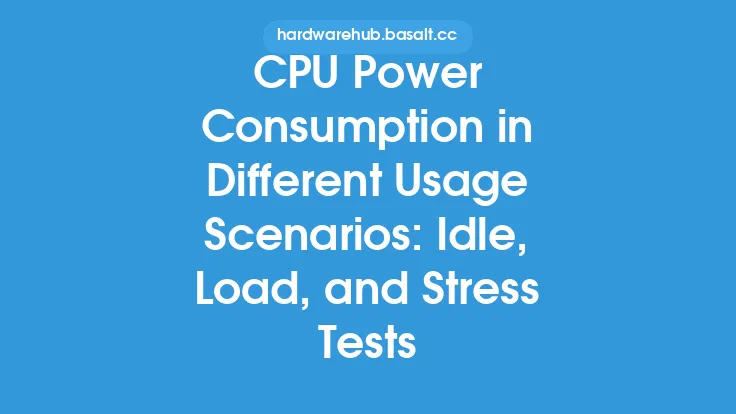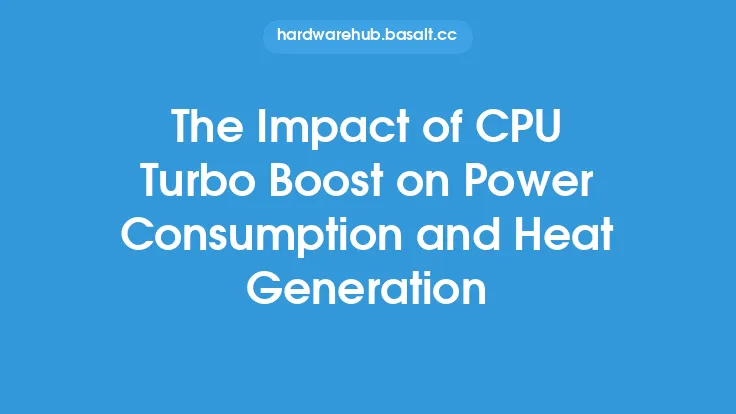Measuring CPU power consumption is a crucial aspect of understanding the energy efficiency of a system, as it directly affects the overall performance, heat generation, and battery life of a device. To accurately measure CPU power consumption, various tools and techniques are employed, each with its own strengths and limitations. In this article, we will delve into the different methods and tools used to measure CPU power consumption, providing an in-depth look at the technical aspects of this process.
Introduction to CPU Power Measurement
CPU power consumption is typically measured in watts (W) or milliwatts (mW), and it can be calculated using various methods, including direct measurement, estimation, and simulation. Direct measurement involves using specialized hardware, such as power meters or current probes, to measure the actual power consumption of the CPU. Estimation methods, on the other hand, use software-based approaches to estimate power consumption based on factors like CPU utilization, voltage, and frequency. Simulation-based methods use modeling and simulation tools to predict power consumption under different workload scenarios.
Hardware-Based Measurement Tools
Hardware-based measurement tools are the most accurate way to measure CPU power consumption. These tools include power meters, current probes, and voltage regulators. Power meters, such as the Watts Up? power meter, can measure the actual power consumption of a system, including the CPU, memory, and other components. Current probes, like the Fluke i410, can measure the current drawn by the CPU, allowing for the calculation of power consumption. Voltage regulators, such as the Intel Voltage Regulator (IVR), can also be used to measure power consumption by monitoring the voltage and current supplied to the CPU.
Software-Based Measurement Tools
Software-based measurement tools are widely used due to their ease of use and flexibility. These tools include operating system-based utilities, benchmarking software, and power measurement frameworks. Operating system-based utilities, such as the Windows Performance Monitor or the Linux sysfs interface, provide information on CPU utilization, frequency, and voltage, which can be used to estimate power consumption. Benchmarking software, like Prime95 or OCCT, can stress the CPU and measure its power consumption under different workload scenarios. Power measurement frameworks, such as the Intel Power Gadget or the CPU Power Meter, provide a more detailed view of power consumption, including breakdowns of power consumption by component and workload.
Techniques for Measuring CPU Power Consumption
Several techniques are used to measure CPU power consumption, including the use of performance counters, model-based estimation, and machine learning-based approaches. Performance counters, such as the Intel Performance Counter Monitor, can measure CPU events like instructions executed, cache misses, and branch predictions, which can be used to estimate power consumption. Model-based estimation uses mathematical models to predict power consumption based on factors like CPU utilization, voltage, and frequency. Machine learning-based approaches use historical data and machine learning algorithms to predict power consumption under different workload scenarios.
Challenges and Limitations
Measuring CPU power consumption is not without its challenges and limitations. One of the main challenges is the accuracy of measurement, as different tools and techniques can provide varying results. Another challenge is the complexity of modern CPUs, which can make it difficult to accurately model and estimate power consumption. Additionally, the dynamic nature of CPU power consumption, which can change rapidly depending on the workload, can make it challenging to obtain accurate measurements. Finally, the lack of standardization in power measurement tools and techniques can make it difficult to compare results across different systems and workloads.
Conclusion
Measuring CPU power consumption is a complex task that requires a range of tools and techniques. From hardware-based measurement tools to software-based estimation methods, each approach has its strengths and limitations. By understanding the different methods and tools available, system designers, developers, and users can gain valuable insights into the energy efficiency of their systems, enabling them to optimize performance, reduce power consumption, and improve overall system reliability. As the demand for energy-efficient systems continues to grow, the importance of accurate CPU power measurement will only continue to increase, driving the development of new tools, techniques, and methodologies to support this critical aspect of system design and optimization.





